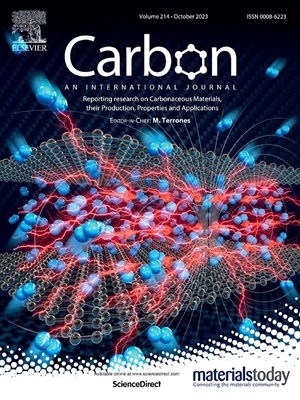Friction condition switching two-type transfer layers of hydrogenated amorphous carbon with distinct tribological behaviors
IF 10.5
2区 材料科学
Q1 CHEMISTRY, PHYSICAL
引用次数: 0
Abstract
Hydrogenated diamond-like carbon (H-DLC) film exhibits excellent tribological properties in vacuum environments, making it highly suitable for applications in spacecraft motion systems. However, the lubrication performance and service life of H-DLC films are significantly affected by complex friction conditions, such as varying loads and motion modes (continuous or intermittent). This study investigates the tribological properties of H-DLC films under different friction conditions by altering contact stress, sliding mode, and contact frequency during friction tests against 440C steel balls. The results reveal two distinct types of transfer layers, shallow and dark, with differing tribological behaviors. Shallow transfer layers, formed under harsh conditions (high load, high contact frequency, and reciprocating sliding), exhibit high graphitization, leading to low friction coefficients but higher wear rates. In contrast, dark transfer layers, formed under milder conditions (low load, low contact frequency, and rotational sliding), show lower graphitization, resulting in higher friction coefficients but reduced wear rates. The formation of these transfer layers is influenced by the energy available to break sp3 carbon bonds at the friction interface, with high contact stress and alternating stress promoting graphitization and preventing debris accumulation. This study provides insights into the friction and wear mechanisms of H-DLC films and offers practical guidance for optimizing their performance in spacecraft moving parts by controlling friction conditions to achieve desired lubrication effects.

摩擦条件下氢化非晶态碳两型转移层的切换具有明显的摩擦学行为
氢化类金刚石(H-DLC)薄膜在真空环境中表现出优异的摩擦学性能,非常适合应用于航天器运动系统。然而,H-DLC膜的润滑性能和使用寿命受到复杂摩擦条件的显著影响,例如不同的载荷和运动模式(连续或间歇)。通过改变H-DLC膜与440C钢球的接触应力、滑动模式和接触频率,研究了H-DLC膜在不同摩擦条件下的摩擦学性能。结果揭示了两种不同类型的传递层,浅传递层和暗传递层,具有不同的摩擦学行为。在恶劣条件下(高载荷、高接触频率和往复滑动)形成的浅传递层表现出高石墨化,导致摩擦系数低,但磨损率高。相比之下,在较温和的条件下(低载荷、低接触频率和旋转滑动)形成的深色传递层显示出较低的石墨化,导致更高的摩擦系数,但降低了磨损率。这些转移层的形成受摩擦界面处破坏sp3碳键的能量的影响,高接触应力和交变应力促进石墨化,防止碎屑堆积。本研究揭示了H-DLC膜的摩擦磨损机理,并为通过控制摩擦条件来优化其在航天器运动部件中的性能以达到理想的润滑效果提供了实践指导。
本文章由计算机程序翻译,如有差异,请以英文原文为准。
求助全文
约1分钟内获得全文
求助全文
来源期刊

Carbon
工程技术-材料科学:综合
CiteScore
20.80
自引率
7.30%
发文量
0
审稿时长
23 days
期刊介绍:
The journal Carbon is an international multidisciplinary forum for communicating scientific advances in the field of carbon materials. It reports new findings related to the formation, structure, properties, behaviors, and technological applications of carbons. Carbons are a broad class of ordered or disordered solid phases composed primarily of elemental carbon, including but not limited to carbon black, carbon fibers and filaments, carbon nanotubes, diamond and diamond-like carbon, fullerenes, glassy carbon, graphite, graphene, graphene-oxide, porous carbons, pyrolytic carbon, and other sp2 and non-sp2 hybridized carbon systems. Carbon is the companion title to the open access journal Carbon Trends. Relevant application areas for carbon materials include biology and medicine, catalysis, electronic, optoelectronic, spintronic, high-frequency, and photonic devices, energy storage and conversion systems, environmental applications and water treatment, smart materials and systems, and structural and thermal applications.
 求助内容:
求助内容: 应助结果提醒方式:
应助结果提醒方式:


